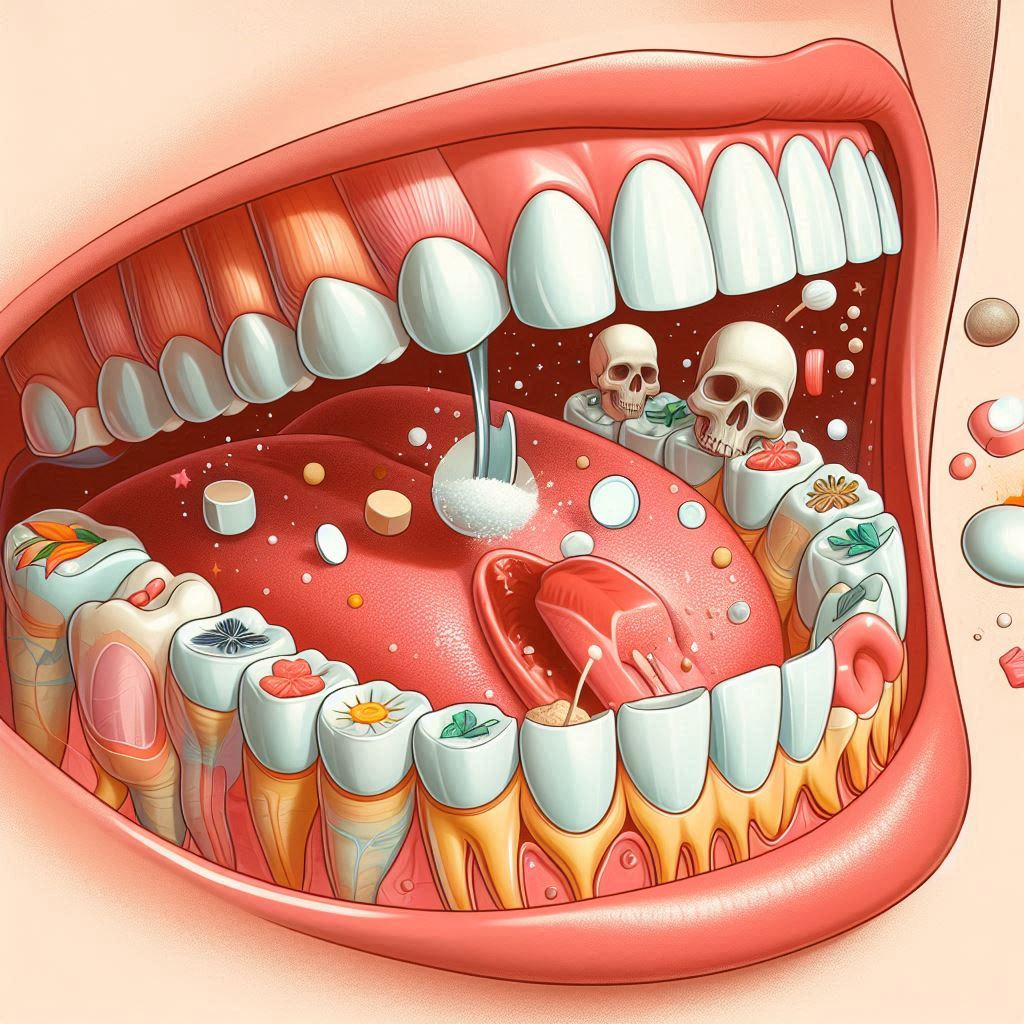Introduction
Taking care of your oral health is essential not only for a beautiful smile but also for your overall well-being. Oral hygiene impacts more than just the aesthetics of your teeth; it can influence your risk for conditions like gum disease, heart disease, and diabetes. The most important part of maintaining oral health is brushing your teeth, and to do so effectively, choosing the right toothbrush and toothpaste is crucial.
When it comes to selecting the ideal toothbrush and toothpaste, one size does not fit all. Your personal oral health needs, the condition of your teeth and gums, and even your preferences for texture, flavor, and convenience all play a role in making the best choice.
The Anatomy of a Toothbrush – An In-Depth Guide
Your toothbrush is a critical tool for maintaining healthy teeth and gums, and while it might seem like a straightforward product, there’s more to consider than meets the eye. From the type of bristles to the shape of the brush head, each element is designed to optimize your brushing experience.
Types of Toothbrushes
To begin, it’s important to understand the two main types of toothbrushes available: manual and electric. Each has its pros and cons.
- Manual Toothbrushes: These are the traditional toothbrushes that require manual effort to move the bristles across your teeth. While they may seem basic, manual toothbrushes are effective when used properly. They come in various sizes, shapes, and bristle types, making it easy to find one suited to your needs. Manual toothbrushes are affordable, easy to travel with, and don’t require batteries or charging.
- Pros: Affordable, lightweight, and portable.
- Cons: Requires more effort and technique, less effective at plaque removal for some.
- Electric Toothbrushes: These brushes have motorized heads that oscillate or rotate to make brushing easier and more effective. Most electric brushes are designed with specific cleaning modes (e.g., for whitening, gum care, or sensitive teeth), and some even include pressure sensors that alert you if you’re brushing too hard. Electric brushes are generally better at removing plaque and providing a more thorough clean, especially for people with mobility issues or those who struggle to maintain consistent brushing techniques.
- Pros: More effective at plaque removal, easier to use for people with limited mobility, may include additional features like timers.
- Cons: Higher cost, requires charging or batteries, not as portable as manual brushes.
Bristle Types and Their Importance
The type of bristles on your toothbrush significantly impacts the effectiveness of your brushing and the overall health of your gums. Bristles are typically classified into three categories: soft, medium, and hard.
- Soft Bristles: These are the most recommended option for most people, as they are gentle on both teeth and gums. Soft bristles can effectively clean the surface of the teeth without causing damage to enamel or gums, especially for people with sensitive teeth or those prone to gum recession.
- Medium Bristles: These offer a balance between soft and hard, providing a firmer brushing experience. They are suitable for people who feel that soft bristles don’t give them a deep enough clean but may still be gentle enough for most users.
- Hard Bristles: Generally not recommended for daily use, as they can be too abrasive on enamel and gums. Using hard bristles can lead to gum irritation, enamel erosion, and increased tooth sensitivity.
When selecting a toothbrush, the bristle type should be chosen based on your individual comfort and oral health needs. Most people will find that soft bristles offer the best combination of cleaning effectiveness and safety.
Brush Head Size and Shape
The size and shape of the toothbrush head are essential for ensuring that the brush can reach all areas of your mouth, including the back teeth and the gum line.
- Small Brush Head: Ideal for people with smaller mouths, as it provides greater maneuverability and access to hard-to-reach areas.
- Larger Brush Head: Suitable for people with larger mouths, although it might be harder to reach the back teeth effectively.
In addition to size, the shape of the brush head matters. Some toothbrushes feature a tapered design that allows better access to the back of the mouth, while others may have a rectangular or oval head, which can be a good option for people who prefer a larger surface area.
Choosing Between Manual and Electric Toothbrushes: Which is Best for You?
The decision between a manual or electric toothbrush comes down to personal preference and specific needs. Here’s a deeper look at the factors influencing this decision:
- Manual Toothbrush: Great for those who enjoy the process of brushing manually or have developed an effective brushing technique. Manual brushes are also easier to find and come in a variety of options for specific needs (e.g., for sensitive gums or whitening).
- Electric Toothbrush: More effective at removing plaque and can make brushing easier, especially if you struggle with the correct technique or have arthritis or other conditions that limit your hand mobility. If you’re looking for a high-tech brushing experience, electric brushes with multiple cleaning modes (e.g., gum care, plaque removal, whitening) can cater to your individual needs.
The general consensus is that electric toothbrushes are more effective at reducing plaque and promoting gum health. However, if you’re diligent about brushing correctly, a manual toothbrush can still be highly effective.
Toothbrush Design for Specific Needs
- Children: Children’s toothbrushes are often smaller, with softer bristles and fun designs to encourage regular brushing. Some models feature larger handles for easier grip.
- Sensitive Teeth: People with sensitive teeth should opt for toothbrushes with extra-soft bristles or an electric toothbrush with a gentle setting. These options minimize discomfort while still effectively cleaning your teeth.
- Braces and Other Dental Appliances: If you wear braces or have other dental appliances, an orthodontic toothbrush with a V-shaped bristle pattern or a specially designed electric brush head can help you clean around the brackets and wires more efficiently.
The Essential Role of Toothpaste in Oral Health
Choosing the right toothpaste is just as important as selecting the right toothbrush. Toothpaste serves multiple functions: it helps to clean your teeth, freshen your breath, remove plaque, and protect your teeth from cavities. The right toothpaste can also help address specific oral health concerns such as sensitivity, gum disease, and tartar buildup.
Understanding the Ingredients in Toothpaste
To make an informed decision about toothpaste, it’s important to understand the active ingredients. Some common and important ingredients found in toothpaste include:
- Fluoride: Fluoride is one of the most essential ingredients in toothpaste. It strengthens enamel, making teeth more resistant to decay and cavities. Almost all standard toothpaste contains fluoride, as it’s the most effective way to prevent cavities.
- Abrasives: Mild abrasives like calcium carbonate, silica, and hydrated aluminum oxides are included in toothpaste to help scrub the surface of the teeth and remove food particles and plaque. These abrasives are designed to be gentle enough not to damage the enamel but effective enough to clean teeth.
- Detergents (Foaming Agents): Ingredients like sodium lauryl sulfate (SLS) help the toothpaste to foam during brushing, which aids in distributing the paste throughout the mouth. SLS is effective at helping remove food particles and plaque.
- Humectants: These ingredients, such as glycerin or sorbitol, help maintain the toothpaste’s consistency and prevent it from drying out.
- Flavoring Agents: Ingredients like menthol, peppermint, and spearmint provide flavor and help freshen breath during and after brushing.
- Antibacterial Agents: Some toothpastes contain antibacterial agents like triclosan, stannous fluoride, or zinc citrate. These help to reduce plaque and bacteria in the mouth, preventing gingivitis and promoting gum health.
Types of Toothpaste Based on Needs
There are various types of toothpaste, each designed for specific oral health needs. Here’s a closer look at some of the most common options:
- Fluoride Toothpaste: This is the most common type of toothpaste, and it’s recommended by dental professionals for cavity prevention. Fluoride strengthens enamel and helps to fight tooth decay.
- Whitening Toothpaste: These toothpaste options typically contain mild abrasives or chemical agents (like hydrogen peroxide) that help remove surface stains. While they can whiten teeth, they are not effective at changing the natural color of your teeth.
- Tartar Control Toothpaste: These contain special chemical agents, such as pyrophosphates, to help prevent tartar buildup on the teeth. Tartar is hardened plaque, which can only be removed by a dental professional.
- Sensitive Toothpaste: Designed for individuals with sensitive teeth, these toothpastes contain ingredients like potassium nitrate or strontium chloride that help reduce tooth sensitivity. They work by blocking the tiny tubules inside the teeth that lead to nerve endings.
- Natural and Herbal Toothpaste: For those looking to avoid chemicals, natural toothpaste options often rely on plant-based ingredients like neem, tea tree oil, or aloe vera. However, natural toothpaste options may lack fluoride, so it’s important to ensure that they still offer cavity protection.
- Children’s Toothpaste: Children’s toothpaste is formulated with lower fluoride content, fun flavors, and often with a non-foaming base. This makes brushing more fun and safe for kids, preventing them from swallowing too much fluoride.
Choosing the Right Toothpaste for Your Specific Needs
When choosing toothpaste, consider your individual oral health needs. Some tips to help guide your decision:
- For Cavity Protection: Fluoride toothpaste is essential for cavity prevention. Make sure it has the ADA Seal of Acceptance to ensure its effectiveness.
- For Sensitive Teeth: Choose a toothpaste that is specifically labeled for sensitive teeth. These typically contain desensitizing agents like potassium nitrate or fluoride.
- For Whitening: Whitening toothpaste can be effective for removing surface stains, but be cautious about excessive use, as it may be more abrasive than regular toothpaste.
- For Tartar Control: Tartar control toothpaste is great for people who have a tendency to develop plaque or tartar buildup.
- For Gum Health: Toothpaste with antibacterial agents like stannous fluoride or triclosan can help fight gum disease and prevent gingivitis.
Special Considerations and Oral Health Conditions
Some people have unique needs based on their oral health condition, lifestyle, or preferences. Here’s a look at how to address those with your choice of toothbrush and toothpaste.
For People with Braces
Braces make it more difficult to clean your teeth, as food and plaque can get trapped around the wires and brackets. To keep your teeth and gums healthy during orthodontic treatment, consider the following:
- Toothbrush: An orthodontic toothbrush with a V-shaped bristle design is ideal for cleaning around the brackets. Electric toothbrushes with small, rotating heads are also effective for reaching areas around braces and ensuring a more thorough clean.
- Toothpaste: Choose fluoride toothpaste to protect against cavities and strengthen enamel. Additionally, tartar-control toothpaste can be useful in reducing plaque buildup around braces, preventing tartar formation, and keeping teeth and braces cleaner. Regular use of both the right toothbrush and toothpaste will enhance oral hygiene, ensuring your braces stay clean and your teeth remain healthy throughout your treatment.
For Pregnant Women
Hormonal changes during pregnancy can lead to pregnancy gingivitis, which causes gum swelling and bleeding. Pregnant women should:
- Toothbrush: Opt for a soft-bristled toothbrush to gently clean your teeth without irritating sensitive gums, especially during pregnancy when your gums may be more prone to discomfort.
- Toothpaste: Choose a fluoride toothpaste with antibacterial properties to help combat plaque buildup and maintain overall oral hygiene. This will support gum health and help prevent issues like gingivitis, which can be more common during pregnancy. The combination of a soft brush and an appropriate toothpaste will help keep your teeth and gums healthy throughout this important time. Regular brushing with these tools ensures a cleaner mouth and contributes to better oral health for both you and your baby.
For People with Dry Mouth
Dry mouth, or xerostomia, can lead to increased plaque buildup and discomfort. If you suffer from dry mouth, opt for a toothpaste that is designed to moisturize and protect the mouth.
Conclusion
Selecting the right toothbrush and toothpaste is essential for maintaining good oral health. It’s important to choose products that align with your specific dental needs, such as cavity protection, sensitivity, or gum care. With the wide variety of options available, finding the right combination can enhance the effectiveness of your oral hygiene routine. When it comes to toothbrushes, consider factors like bristle type and head size. For example, soft bristles are often recommended for those with sensitive gums or teeth, while a smaller brush head can help reach difficult areas in the mouth. Electric toothbrushes may also offer advantages in terms of cleaning efficiency.
Toothpaste selection should be based on your individual oral health goals. If you’re concerned about cavities, choose a fluoride toothpaste that helps strengthen enamel and prevent decay. For those with sensitive teeth, there are specially formulated toothpastes that can reduce discomfort. If gum health is a concern, look for toothpastes with ingredients that help reduce plaque and promote healthy gums. By selecting the right tools tailored to your specific needs and brushing regularly, you can not only maintain a brighter, cleaner smile but also ensure long-term oral health. Consistency is key, so stick to a routine that includes proper brushing and regular dental checkups for optimal results.
SOURCES
American Dental Association (ADA). (2021). Oral hygiene tips: Brushing your teeth. American Dental Association.
Brunelle, J. A., & Lamb, S. W. (2020). The effects of toothbrush design on plaque removal: A review of current literature. Journal of Dentistry Research, 99(4), 251-257.
Crawford, G. H., & Rohrer, M. D. (2019). Electric toothbrushes: A comparison of efficacy and patient preference. Journal of Clinical Dentistry, 45(3), 131-137.
Davies, P. T., & Swartz, A. L. (2022). The role of fluoride in the prevention of dental caries. International Journal of Dental Sciences, 58(1), 23-30.
Jones, L. M., & Thompson, B. M. (2020). Sensitivity in dental care: Choosing the right toothpaste for sensitive teeth. Journal of Oral Health, 10(2), 89-95.
Keller, D. L., & Zhen, J. T. (2019). Whitening toothpastes: A review of their effectiveness and safety. Oral Hygiene and Preventive Care, 24(5), 234-239.
Meyer, L. A., & Jordan, A. K. (2021). Choosing the right toothbrush for children: Age-based recommendations. Pediatric Dentistry Review, 42(3), 145-150.
Petersen, P. E., & Ogawa, H. (2019). Periodontal diseases and oral health: The link with systemic diseases. Dental and Medical Studies, 32(3), 112-119.
Robinson, W. M., & Richards, G. T. (2020). Understanding the impact of antibacterial agents in toothpaste on gum health. Journal of Periodontal Health, 35(4), 210-216.
Smith, S. E., & Williams, C. H. (2020). The effectiveness of natural toothpaste products in reducing plaque and gingivitis. Journal of Natural Dentistry, 17(2), 56-62.
HISTORY
Current Version
February 6, 2025
Written By:
SUMMIYAH MAHMOOD




